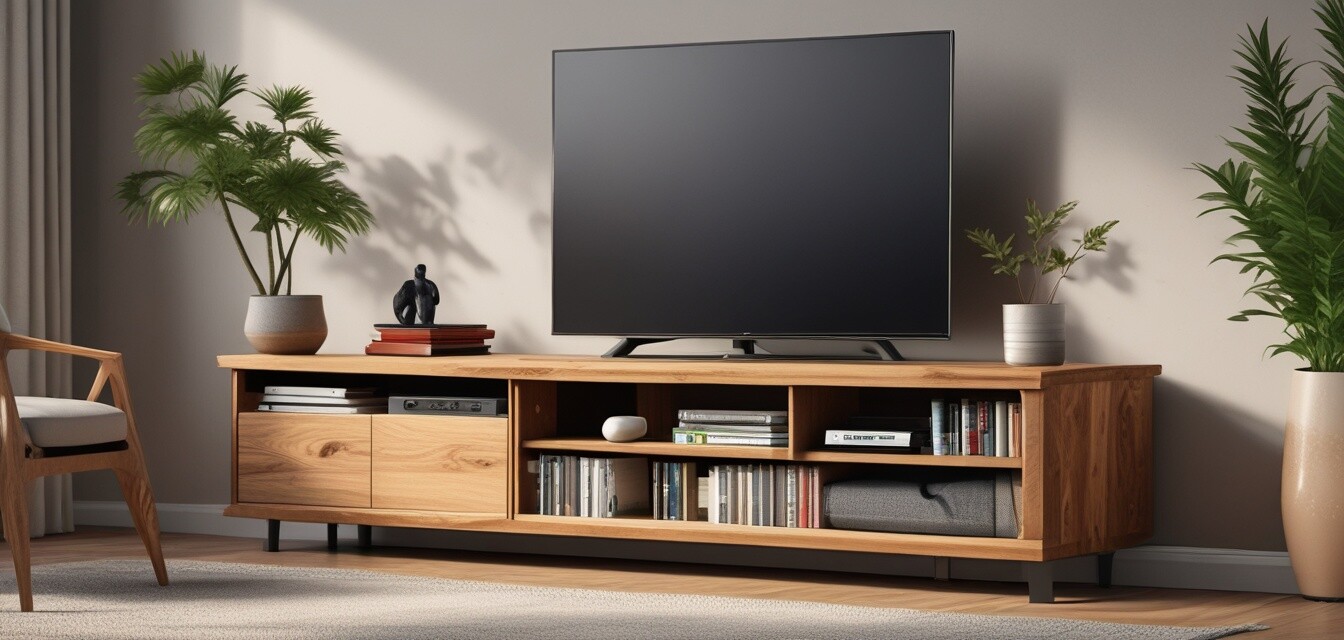
The Relationship Between Sustainability and Aesthetics
- Sustainable furniture can be visually appealing without compromising on style.
- Eco-friendly materials enhance both the durability and look of furniture like TV stands.
- Mindful purchasing habits contribute to a greener lifestyle while elevating home aesthetics.
- Understanding sustainable practices is essential in today’s furniture choices.
In an era where sustainability is becoming increasingly important, the relationship between eco-friendliness and aesthetics in furniture design, particularly TV stands, is essential to understand. This article delves into how to choose environmentally responsible furniture that does not compromise on style. We’ll also discuss what materials to look for, and offer tips on making your home both beautiful and sustainable.
Understanding sustainable materials
When it comes to eco-friendly furniture, the choice of materials plays a pivotal role. Sustainable materials not only reduce environmental impact but can also enhance the aesthetic appeal of your living space. Here are popular materials used in sustainable TV stands:
| Material | Benefits | Aesthetic Appeal |
|---|---|---|
| Reclaimed Wood | Reduces waste, often more affordable | Unique textures and colors |
| Bamboo | Rapidly renewable resource, durable | Modern look, warm tones |
| Recycled Metal | Reduces mining and resource use | Industrial and contemporary aesthetics |
| Eco-friendly MDF | Made from reclaimed wood fibers | Smooth, sleek finish |
Why choose eco-friendly furniture?
Making the switch to sustainable furniture offers several benefits beyond just aesthetics:
- Reduced environmental impact.
- Long-lasting durability.
- Healthier indoor air quality.
- Support for ethical manufacturing practices.
Versatility in Design
One of the most appealing aspects of sustainable furniture is its versatility. Whether you prefer classic, contemporary, or eclectic styles, there’s an eco-friendly option available. Here are some styles to consider:
- Rustic Charm: Reclaimed wood stands bring warmth and character.
- Modern Minimalism: Bamboo designs suit sleek, clean spaces.
- Industrial Chic: Recycled metal stands work well for urban environments.
- Scandinavian Aesthetics: Eco-friendly MDF fits beautifully in bright and airy settings.
Buying tips for sustainable furniture
When shopping for eco-friendly TV stands, keep the following tips in mind:
- Research Materials: Understand the sustainability of the materials used.
- Check Certifications: Look for certifications like FSC, GREENGUARD, or GOTS.
- Inspect Construction: Quality craftsmanship ensures longevity.
- Consider Upcycling: Look for second-hand items that can be refreshed.
- Shop Local: Supporting local artisans reduces carbon footprint.
Eco-friendly living and mindful purchasing
Integrating sustainable practices into your home requires a commitment to mindful purchasing habits. This includes understanding not just the materials and style of the furniture you select but also the impact your choices have on the environment and community. For more tips on eco-friendly living, check our Eco-Friendly Living category.
How aesthetics influence your space
The design of your furniture influences not only your home’s look but also your mindset. A well-designed TV stand that aligns with your aesthetic preferences can enhance your viewing experience and create a welcoming atmosphere. A beautiful living environment promotes relaxation and enjoyment of your space.
Styling your eco-friendly TV stand
Styling your TV stand can also be a fun way to incorporate eco-friendliness into your design. Here are a few suggestions:
- Add decorative plants for vibrancy.
- Use sustainable decor items made from glass, stone, or earth-friendly textiles.
- Incorporate personal touches like family photos or handmade crafts.
- Select a color palette that enhances the natural beauty of the materials.
Pros
- Environmentally responsible materials.
- Unique design options that stand out.
- Durability and longevity among sustainable products.
- Support for ethical manufacturers and local economies.
Cons
- Potentially higher initial costs.
- Fewer options in styles compared to conventional furniture.
- Availability might be limited in certain regions.
Conclusion
The relationship between sustainability and aesthetics is an essential aspect of modern furniture choices. Choosing eco-friendly TV stands does not mean compromising on style; it allows for creative expression while supporting a healthier planet. Remember that every purchase contributes to a larger cause. Make wise choices that reflect both your values and your style, embracing the full potential of sustainable living.